Army Divisions: Understanding Their Roles and Structure

Army divisions are essential elements in military organization, crucial for effective combat and support operations. An Army division typically consists of between 10,000 and 20,000 soldiers, making it one of the largest and most versatile types of military units.
Each division includes numerous smaller units, such as brigades and battalions, which can operate independently or together depending on the mission.

Historically, Army divisions have undergone multiple reorganizations to adapt to changing warfare needs.
For example, strategies from World War II to modern conflict have caused shifts in the structure and roles of these divisions.
Today, the focus is on flexibility, ensuring that divisions can quickly respond to various challenges around the world.
Understanding the makeup of Army divisions provides insight into how large-scale military operations are conducted.
From infantry to armored and airborne divisions, each type of division plays a unique role.
This versatility makes them a cornerstone of national defense, contributing to the success of military engagements globally.
Key Takeaways
- Army divisions are large units with thousands of soldiers.
- They have evolved to meet changing warfare demands.
- Different divisions serve unique roles in modern military operations.
History and Evolution
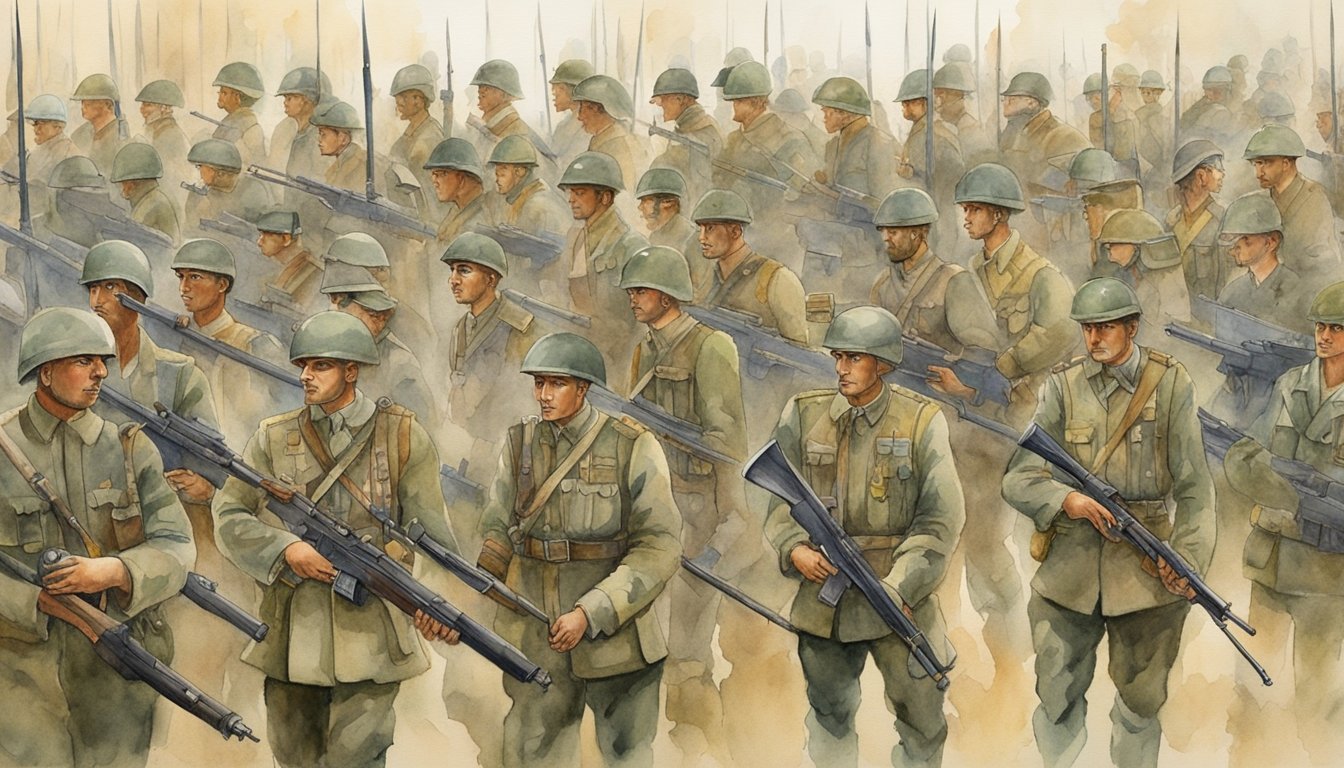
The divisions of the United States Army have undergone significant changes over the years.
From their early days of temporary organization to becoming the core structure of modern military operations, these changes reflect the demands and strategies of different eras.
World War I Onset
During World War I, the idea of a permanent division in the U.S. Army took shape.
Before this era, divisions were only temporary and formed for specific campaigns.
In 1916, Congress authorized the creation of permanent divisions.
This was a big deal because it allowed for better preparedness and organization.
These permanent divisions were crucial during World War I. They were designed to handle large-scale operations, which was necessary for the intense and widespread fighting of the war.
The new structure meant that troops could be more efficiently managed and deployed.
With these changes, the U.S. Army could respond more effectively.
Troops were trained and organized into units that could work together seamlessly.
This made a huge difference in the effectiveness and coordination of military operations.
World War II Developments
World War II brought further evolution to army divisions.
The conflict required even more flexibility and adaptability.
This led to the creation of specialized divisions, such as airborne and armored divisions.
These new divisions had specific roles.
For example, airborne divisions were trained for parachute assaults and quick deployments behind enemy lines.
Armored divisions focused on utilizing tanks and other armored vehicles.
This specialization allowed the U.S. Army to tackle different challenges across multiple fronts.
The organizational structure of divisions also evolved.
Each division included a mix of combat arms, combat support, and combat service support units.
This integrated approach ensured that divisions could operate independently and sustain prolonged engagements without needing constant external support.
Post-World War Reorganization
After World War II, the U.S. Army underwent significant reorganization.
The aim was to streamline and modernize the force to meet post-war challenges.
This period saw the establishment of new unit sizes and structures based on lessons learned from the war.
One major change was the introduction of the pentomic division concept in the 1950s.
This new structure focused on smaller, more flexible units that could respond quickly to nuclear threats and other modern warfare scenarios.
Despite various reorganizations, the core idea of the division as the primary building block of the Army remained.
Even today, divisions are designed to be versatile and capable of handling a variety of missions.
The adjustments in size, structure, and specialization over the decades reflect the evolving nature of warfare and the need for a responsive and effective military force.
Organizational Structure
In the military, the organizational structure of army divisions is crucial.
It dictates how different units, such as brigades and battalions, function together.
This structure ensures that commands are clear and operations run smoothly.
Division Types
Army divisions are divided into several types based on their specialized functions.
These can include Infantry Divisions, Armored Divisions, and Airborne Divisions.
Each type has its unique strengths and capabilities.
For example, Infantry Divisions are trained for ground combat and often include multiple battalions.
Armored Divisions utilize tanks and other vehicles for rapid movement and offensive power.
Airborne Divisions, on the other hand, are designed for quick deployment by air to any location.
Command Hierarchies
The command hierarchy within an army division starts at the top with the Division Headquarters.
This includes senior officers who devise strategies and make critical decisions.
Below the division level, you have brigades that are led by a colonel.
These brigades are composed of various battalions, usually commanded by a lieutenant colonel.
Each battalion contains companies, which are further subdivided into platoons and squads.
This chain of command ensures every soldier knows their role within the structure.
Unit Formations
Unit formations are how the different elements of a division are arranged during operations.
In an Infantry Division, standard formations include the line, column, and square formations.
Line formations maximize firepower to the front, columns are used for movement, and square formations offer all-around defense.
Armored Divisions often use wedge and echelon formations for offensive and defensive maneuvers.
Airborne Divisions employ different landing and drop formations to ensure the troops land safely and are quickly ready for combat.
The formations used can greatly impact the success of military operations.
Key Army Divisions
In the U.S. Army, several key divisions play important roles in various military operations.
These divisions are specialized units, each with its unique focus and responsibilities.
Infantry Divisions
Infantry divisions are the backbone of the army, with soldiers trained for close combat.
Notable units include the 1st Infantry Division, known as “The Big Red One,” and the 4th Infantry Division, famous for its mechanized tactics.
The 25th Infantry Division operates under the motto “Tropic Lightning” and is highly specialized in jungle warfare.
Additionally, the 29th Infantry Division and the 34th Infantry Division have long histories dating back to World War I.
These divisions are crucial for ground operations, providing the manpower needed to secure areas and perform various tactical missions.
Armored Divisions
Armored divisions are equipped with tanks and other armored vehicles.
The 1st Armored Division, sometimes called “Old Ironsides,” is one of the oldest and most famous.
The 1st Cavalry Division operates as an armored division but maintains elements of its cavalry roots, including helicopters.
Both divisions are significant in rapid mobility and heavy firepower, crucial in large-scale engagements.
These units are designed to penetrate enemy lines with their armored might and are often pivotal in both offensive and defensive operations.
Airborne Divisions
Airborne divisions specialize in parachute assaults and air mobility.
The 82nd Airborne Division is one of the most renowned, often called “America’s Guard of Honor.” They are rapid responders, capable of deploying almost anywhere in the world within 18 hours.
The 101st Airborne Division, or “Screaming Eagles,” is another elite unit known for its air assault operations.
These divisions provide unique capabilities in getting troops quickly into key positions.
The 10th Mountain Division specializes in operations in harsh terrains and is often involved in international missions.
Airborne divisions offer flexibility and shock value, making them a strategic asset in many military operations.
Division Life
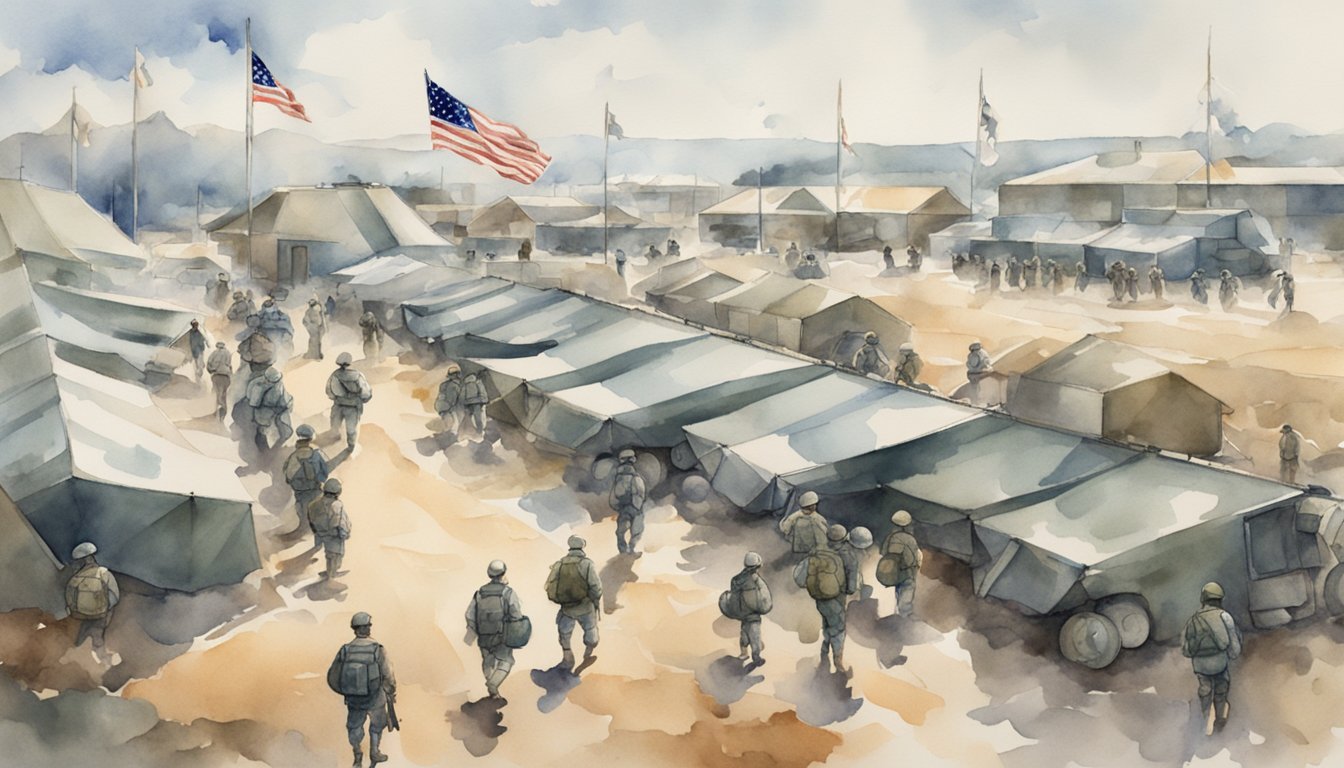
In an Army division, you’ll find a highly disciplined environment where soldiers are always prepared for the next mission.
Training and daily operations create a rhythm that keeps everyone ready and self-sufficient.
Training and Readiness
Training is a critical part of division life.
Soldiers often undergo rigorous drills to maintain their skills.
You’ll participate in live-fire exercises and simulated combat scenarios.
These activities not only enhance your readiness but also boost teamwork.
The division’s readiness is constantly evaluated through various assessments.
These may include physical fitness tests, weapons qualifications, and emergency mobilization exercises.
The aim is to ensure that every member is prepared to deploy at a moment’s notice.
Specialized training sessions, like airborne or air assault courses, are also common.
These courses require soldiers to master specific techniques and equipment.
This makes divisions well-rounded and highly capable in various combat situations.
Regular field exercises at places like Fort Irwin, California, are part of the training regimen.
These environments simulate real-world combat conditions, helping you adapt and stay alert.
The goal is to be ready for any situation, anywhere.
Daily Operations
Daily life in a division is structured yet dynamic.
Your day typically starts early with physical training.
This ensures that everyone stays in top physical condition, which is crucial for combat readiness.
Morning briefings are common and cover the day’s tasks and objectives.
You’ll likely be assigned to specific duties, whether it’s maintenance work, tactical drills, or administrative tasks.
Each role is vital to the division’s self-sufficiency.
Regular inspections of equipment and vehicles are part of the daily routine.
This ensures everything is in working order and ready for deployment.
You might also find yourself participating in communication drills to ensure seamless coordination during missions.
Meal times and short breaks offer moments to relax and bond with your fellow soldiers.
These interactions are important for building camaraderie and a strong team spirit.
Even in such a disciplined environment, there’s room for personal connections and mutual support.
So, while life in a division is demanding, it’s designed to keep you and your unit in peak condition, ready to face any challenge.
Specialized Division Roles
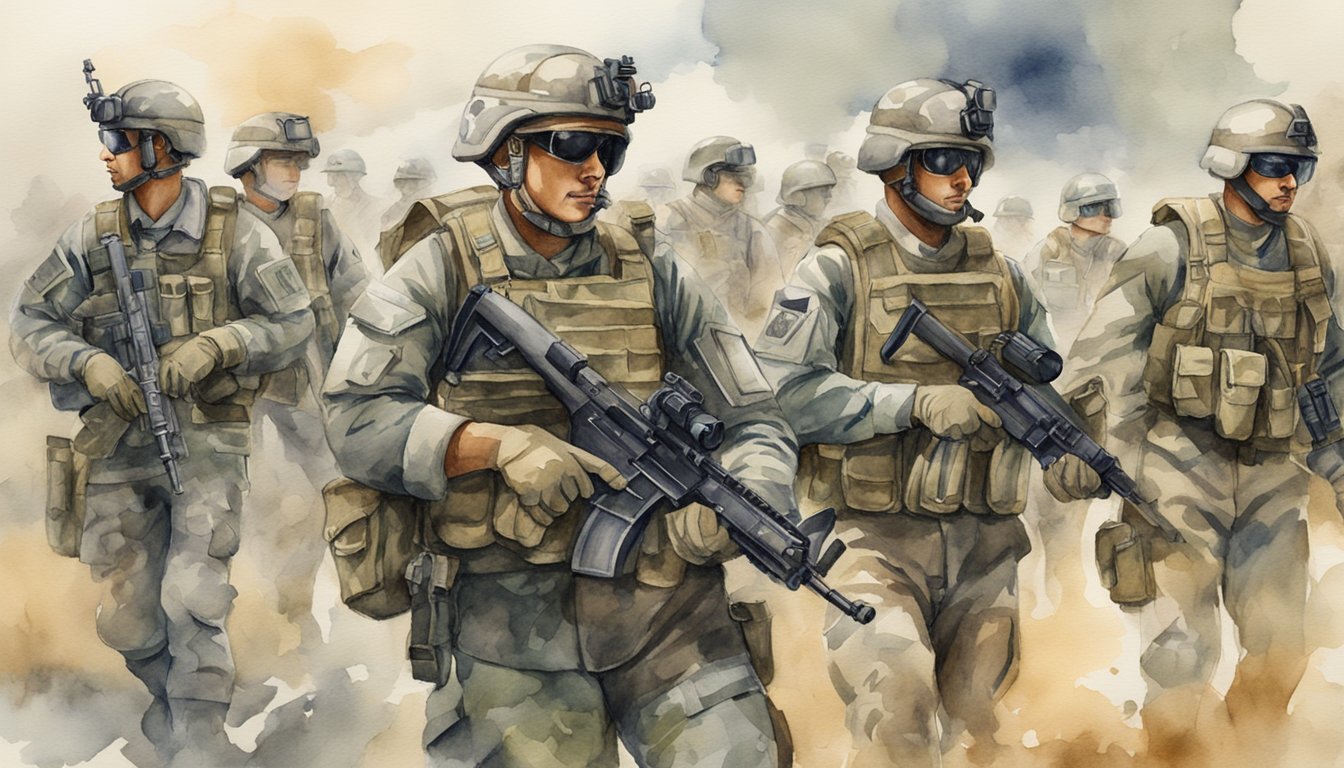
Specialized divisions in the Army ensure that various aspects of warfare are covered, from ground combat to intelligence gathering.
Each division has a specific role and unique capabilities to support the overall mission.
Air Assault and Aviation
Air Assault divisions are designed to quickly deploy troops and equipment using helicopters.
These divisions excel at reaching difficult terrains where ground vehicles cannot go.
You will see a mix of infantry and aviation units working together.
They can perform rapid insertions, extractions, and air cover.
Their flexibility allows for fast responses to changing battlefield conditions.
Aviation units provide air mobility and fire support.
They often include both attack helicopters, such as the Apache, and transport helicopters like the Black Hawk.
This combination ensures both offensive and logistical capabilities.
Reconnaissance and Intelligence
Reconnaissance and Intelligence divisions gather crucial information about the enemy and terrain.
They use various methods, including surveillance and electronic warfare, to provide a clear picture of the battlefield.
Key components include armored and light armored reconnaissance units.
These units scout ahead and provide real-time data on enemy positions.
Intelligence units analyze this data to help commanders make informed decisions.
Specialized equipment, such as drones and advanced communication systems, enhances their capabilities.
These divisions play a key role in reducing uncertainty and increasing the effectiveness of combat operations.
Logistics and Support
Logistics and Support divisions ensure that combat units have everything they need, from ammunition to medical supplies.
These divisions include a range of units specialized in transportation, engineering, and medical services.
You will find these divisions handling the transportation of heavy armor and supplies using trucks and aircraft.
They also manage the construction of bridges and fortifications, which is essential for armored units and infantry to advance.
Medical support units are crucial for providing first aid and medical evacuation in combat zones.
Efficient logistics and support are essential for maintaining the combat readiness and effectiveness of the entire army force.
Notable Divisions Throughout U.S. History
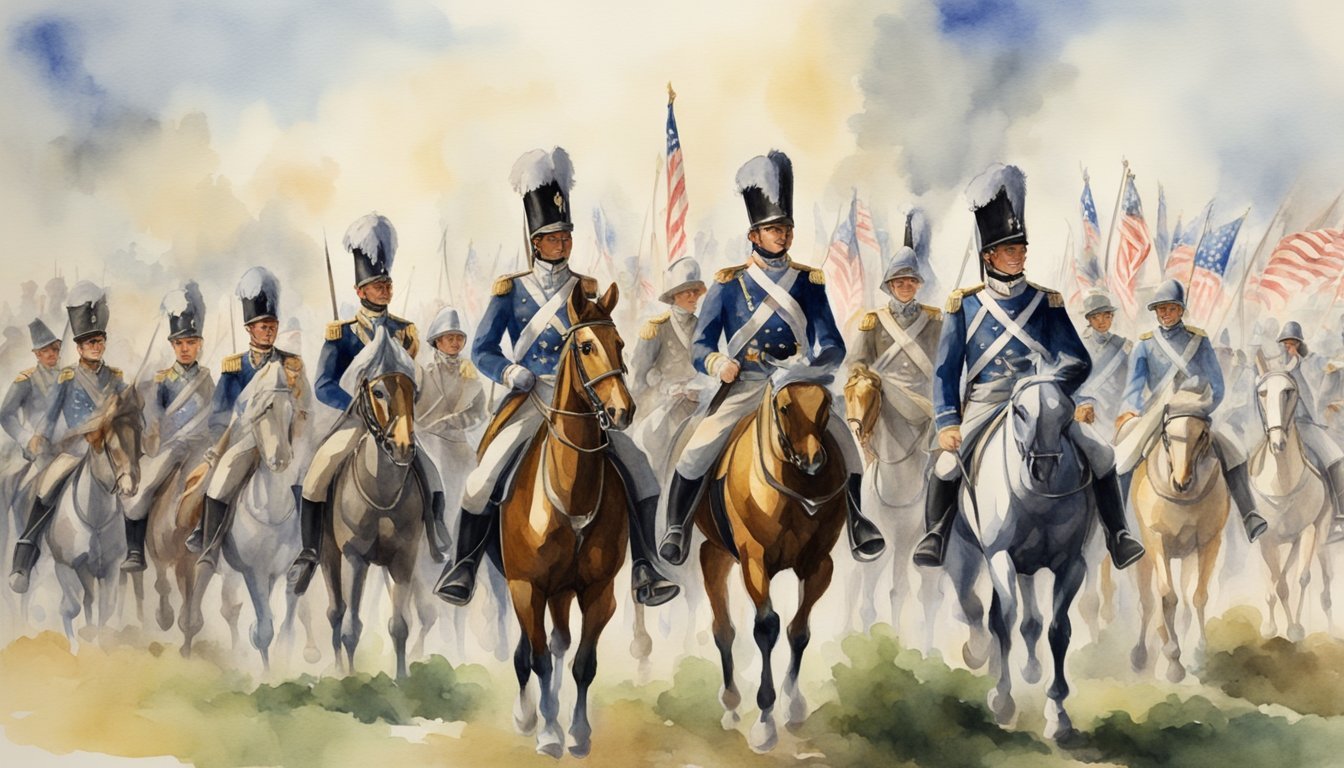
This section highlights key U.S. Army divisions known for their historical impact and notable campaigns.
These divisions have played major roles in shaping military history.
Historical Impact of Various Divisions
The United States Army has several divisions with significant historical contributions.
The 1st Infantry Division is one of the oldest, known as “The Big Red One.” It was established in 1917 and has been involved in every major conflict since World War I. The 82nd Airborne Division is famous for its airborne operations, especially during World War II. The 38th Infantry Division, often referred to as the “Cyclone Division,” played a critical role in World War II in the Pacific Theater.
You can also find the National Guard units that have participated in both world wars and peacetime operations.
Famous Campaigns and Battalions
Many U.S. Army divisions are celebrated for their key roles in significant campaigns.
The 1st Infantry Division participated in the famous Normandy landings on D-Day.
The 82nd Airborne was crucial in several WWII operations, including Market Garden and the Battle of the Bulge.
The Cyclone Division’s battalions were heavily involved in liberating the Philippines and various Pacific campaigns.
You’d also notice units like the 101st Airborne Division, known for their bravery in the Battle of Bastogne during WWII.
These divisions have left an indelible mark on military history, showcasing courage and strategic prowess.
Modern Division Equipment
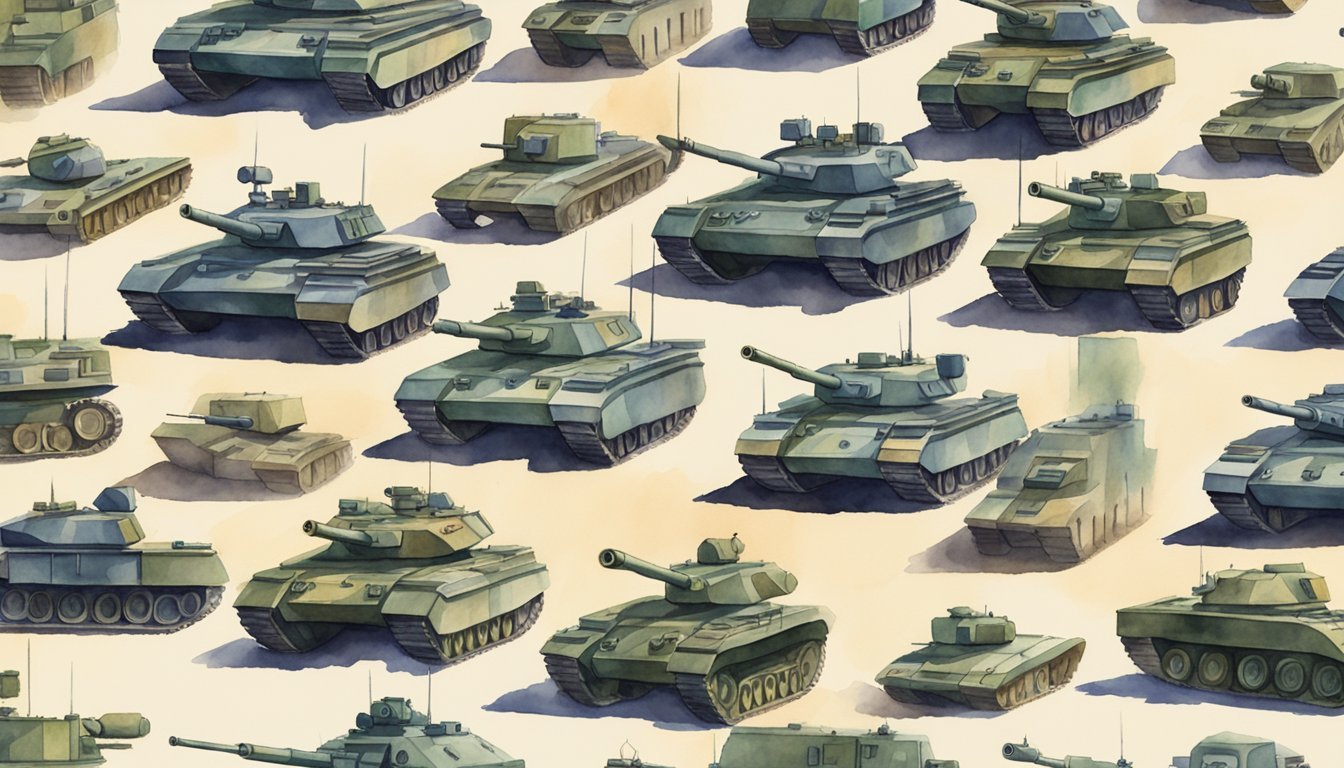
Today’s military divisions rely heavily on advanced equipment to ensure superiority on the battlefield.
This includes modern weapons, vehicles, and cutting-edge communication technologies.
Weapons and Vehicles
An Armored Brigade Combat Team (ABCT) typically uses tanks like the M1 Abrams.
This tank is known for its heavy armor and powerful cannon.
You will also see vehicles like the Bradley Fighting Vehicle.
This vehicle carries soldiers into battle and provides support with its automatic cannon and missiles.
In an Infantry Brigade Combat Team (IBCT), you’ll find lighter, more mobile vehicles like the Humvee and Joint Light Tactical Vehicle (JLTV).
These vehicles are crucial for transporting troops and equipment quickly.
They also offer some protection against small arms fire and IEDs (Improvised Explosive Devices).
Communications and Technology
Modern divisions rely on advanced communications and tech tools.
The SINCGARS radio is a standard piece of equipment, ensuring secure voice and data communication in the field.
This radio helps units maintain coordination during missions.
For higher-tech needs, divisions use systems like the Joint Battle Command-Platform (JBC-P).
This system provides real-time situational awareness, allowing commanders to see troop movements and make quick decisions.
Tablet devices and laptops with secure networks like NIPRNet and SIPRNet also play a key role.
Additionally, divisions make use of drones for reconnaissance and surveillance.
These unmanned aerial vehicles (UAVs) provide critical intel without risking soldiers’ lives.
Finally, night vision goggles and other enhanced vision gear ensure troops can operate effectively in any environment.
Geographic Presence
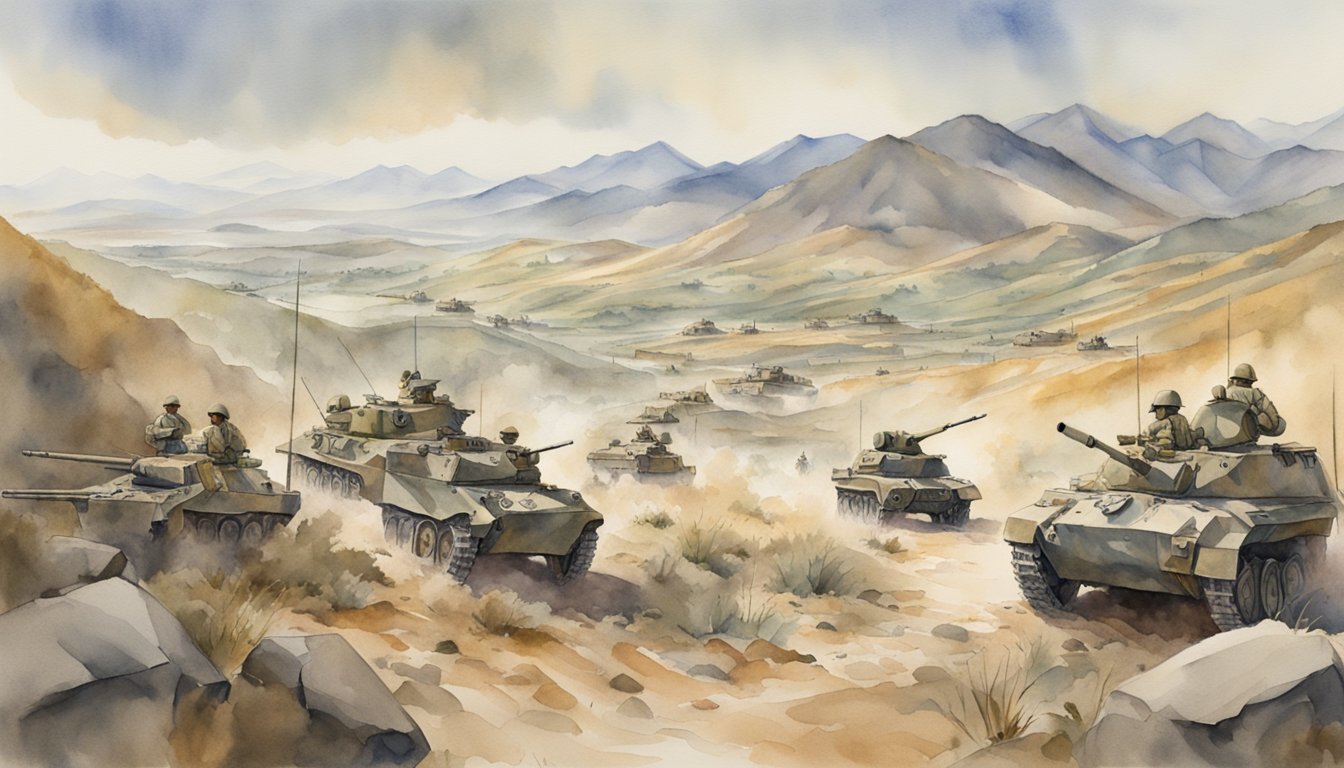
Army divisions are stationed across various locations within the United States and overseas.
They are positioned strategically to enhance national defense and support global missions.
Stateside Bases
In the U.S., you’ll find major Army divisions at key bases. Fort Hood in Texas hosts the III Corps and the 1st Cavalry Division. Fort Bragg in North Carolina is home to the 82nd Airborne Division.
On the west coast, Fort Lewis in Washington houses the I Corps and the 7th Infantry Division.
New York’s Fort Drum hosts the 10th Mountain Division, known for its rapid deployment capabilities.
Each of these bases is crucial for training and deployment, ensuring that divisions are ready for any mission.
Overseas Deployments
Abroad, Army divisions have a strong presence to support international operations.
In Europe, units like the 2nd Cavalry Regiment are stationed to provide a quick response to NATO allies.
In the Pacific, divisions are spread across key locations in Hawaii and South Korea, including the 25th Infantry Division based in Hawaii.
These deployments help maintain stability and support allies in regions with strategic importance.
They ensure that the U.S. Army can respond quickly to conflicts and support peacekeeping missions worldwide.
Leadership Dynamics
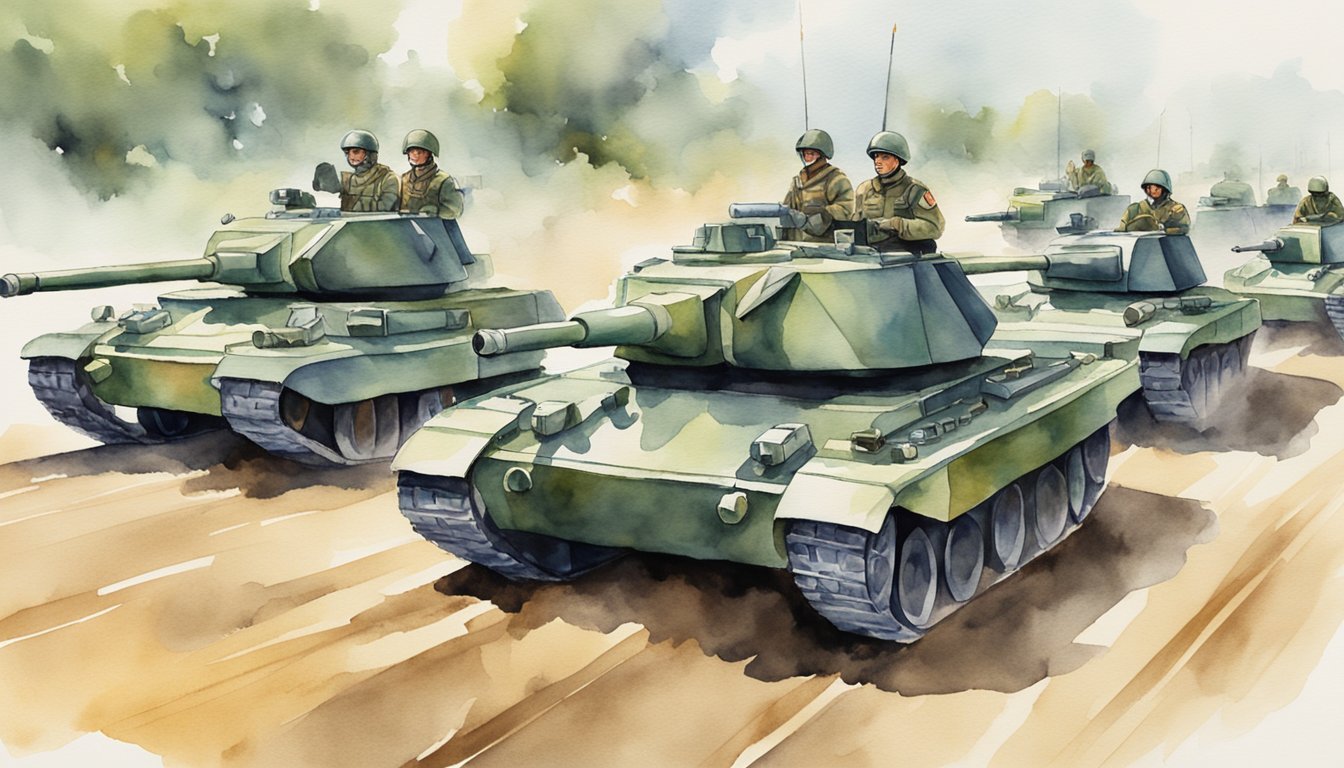
Army divisions are structured for efficiency and effectiveness.
Leadership within these divisions ensures that objectives are met and troops are well-coordinated.
Rank and Command
Leadership in the Army is heavily influenced by rank.
Each rank comes with specific responsibilities and authority.
At the top is the General, who oversees all divisions.
Below them is the Lieutenant General, responsible for larger units or multiple divisions.
A Major General typically commands a division, ensuring all operations run smoothly.
Down the chain, you have the Colonel, who leads a brigade within the division. Lieutenant Colonels command battalions, while Lieutenants often lead smaller units like platoons or companies.
This hierarchical structure ensures clear command lines and efficient decision-making.
Notable Commanders
Throughout history, several commanders have stood out due to their exceptional leadership.
One such figure is General George S. Patton, known for his aggressive tactics in World War II.
Another is Major General John F. Reynolds, who played a crucial role at the Battle of Gettysburg.
Lieutenant General Ulysses S. Grant eventually became the commanding general of the U.S. Army and later the President. Colonel Joshua Chamberlain is remembered for his heroism at the Battle of Gettysburg.
These commanders not only led with strategy but inspired their troops through their actions and decisions.
Enlistment and Career Paths
Joining the Army offers a variety of paths for those looking to serve their country and develop their skills.
Whether you choose the Regular Army, Army Reserve, or Army National Guard, each option provides unique opportunities for progression and specialization.
Becoming a Soldier
To become a soldier, you must first meet the basic requirements: be a U.S. citizen or permanent resident, be between 17 and 34 years old, have a high school diploma or equivalent, and pass a physical fitness test.
You’ll start by meeting with a recruiter, who will guide you through the enlistment process.
After enlisting, you’ll attend Basic Combat Training (BCT).
This training covers essential soldiering skills, physical fitness, and discipline.
Following BCT, you will attend Advanced Individual Training (AIT) for specialized skills based on your chosen Military Occupational Specialty (MOS).
Your MOS could range from infantry to medical services, and even military police.
Rank Advancement
Your career in the Army starts at the rank of Private, but there are many opportunities for advancement.
Promotions are based on a combination of time in service, performance, and educational qualifications.
As you gain experience, you can rise through the ranks from Private to Sergeant and beyond.
For those looking to fast-track their leadership trajectory, becoming a Warrant Officer or Commissioned Officer is an option.
The Warrant Officer Candidate School (WOCS) and Officer Candidate School (OCS) provide these paths.
Officers take on significant leadership roles and have a higher level of responsibility and expertise in their fields.
Specialization and Training
Specialization allows soldiers to become experts in specific fields.
After completing AIT, you might focus on roles like intelligence, engineering, or aviation.
For example, Army Transportation Management Coordinators play a critical role in logistics and coordination.
Continuous training and education are key to advancing your career.
Various programs and courses are available to further develop your skills.
As you progress, you may also have the opportunity to attend professional military education courses, which prepare you for higher levels of responsibility and leadership.
Whether you’re in the Regular Army, Army Reserve, or Army National Guard, these paths provide a structured yet flexible career with countless possibilities for growth and specialization.
Future of Army Divisions
Army divisions are undergoing significant changes to meet future defense needs.
You will see a shift towards more agile and flexible units.
Light Divisions, like the Light BCTs (LBCTs), will be more common.
They focus on speed and mobility, often using the Infantry Squad Vehicle (ISV) for rapid movements.
Mobile BCTs (MBCTs) will feature fully motorized rifle companies.
This change aims to enhance your ability to respond quickly to threats with greater firepower.
Command and Control
New technologies will bolster your army commands.
Enhanced communication systems will improve coordination and operational efficiency.
This will give you a strategic edge.
Security and Defense
Future divisions will require improved cross-domain reconnaissance and surveillance (R&S).
This means integrating air, ground, and cyber capabilities to better understand the battlefield.
Infrastructure advancements are also on the horizon.
Bases will become more resilient and capable of supporting these modern units, allowing you to deploy quickly and sustain operations.
The goal is for you to be better prepared for large-scale combat operations.
The focus will be on making divisions the decisive tactical echelon again, emphasizing flexibility and technological integration.
The Army of 2030 will be all about evolving to meet the challenges of modern warfare.
Frequently Asked Questions
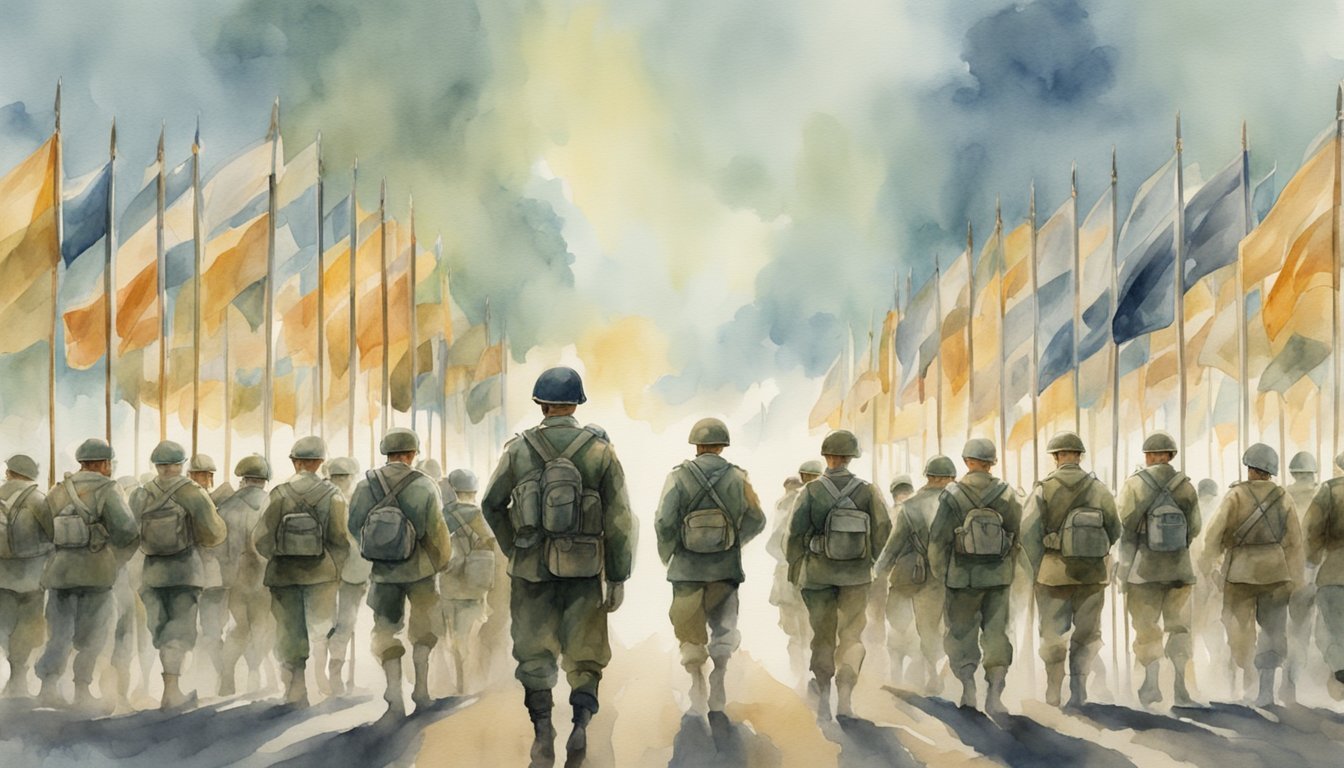
The U.S. Army has a complex structure with many types of units, each serving unique roles and functions.
Here are some common questions people have about Army divisions.
How’s the U.S. Army structure broken down?
The U.S. Army is organized into several levels: squads, platoons, companies, battalions, brigades, and divisions.
Each level has a specific number of soldiers and is designed for certain tasks.
Got any idea about the naming of Army units?
Army units usually have names that reflect their history, like the 101st Airborne Division or the 1st Infantry Division.
The names often include a number and a keyword that indicates their specialty or history.
Can you tell me how many divisions the Army’s got?
There are about 10 active divisions in the United States Army today.
These divisions include different types like infantry, armored, and airborne.
Each division has its own unique capabilities.
What were the divisions called in the Army back in WW2?
During World War II, divisions were named numerically, such as the 1st Armored Division or the 82nd Airborne Division.
These names often reflect their roles and specializations during the war.
Just curious, what are the main types of units in the Army?
The main types of units in the Army include infantry, armored, airborne, and special forces.
Each has its own special training and missions.
For example, ROTC divides training into Basic and Advanced Courses to prepare cadets for different leadership roles.
What roles do different Army units play in the bigger picture?
Different Army units work together to complete missions.
Infantry units usually engage directly with the enemy.
Armored units use tanks for heavy firepower.
Airborne units can be quickly deployed by air.
These units all support each other in larger operations.
For more detailed information on Army divisions, this list provides a comprehensive overview.






